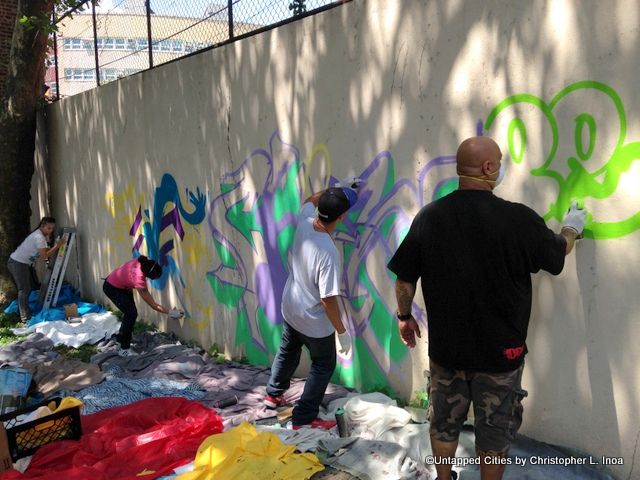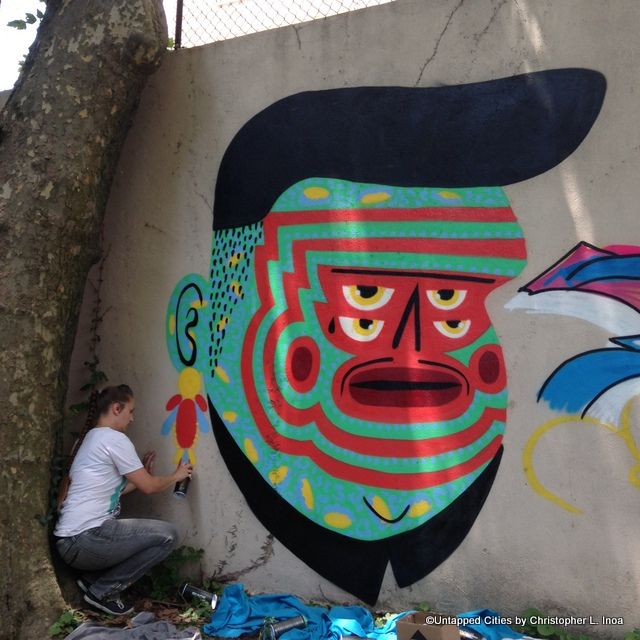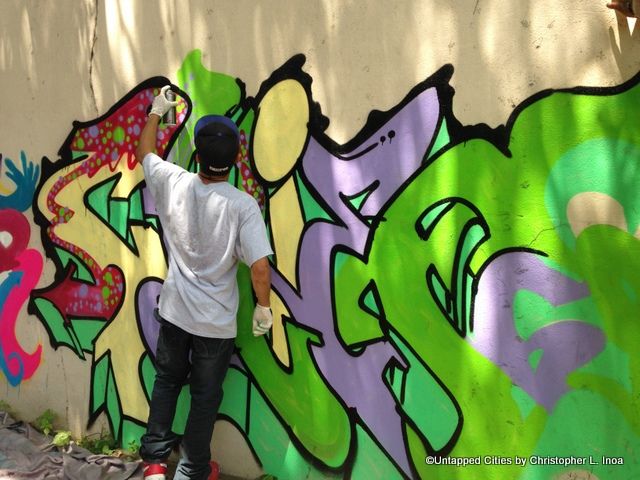NYC's Long-Awaited Davis Center Opens in Central Park
A stunning new facility at Harlem Meer opens to the public this weekend!



No matter how much it annoys our current Chief of Police, graffiti is ingrained in NYC’s fabric. In the decades since it was common to see fresh murals painted on the sides of many of the city’s trains, neighborhoods have gone from wanting graffiti wiped from NYC’s identity, to using it as a tool to give their communities new life. Through The Boone Room project at Fannie Lou Hamer Freedom High School in the Bronx, the controversial art form is being used to help retain the neighborhood’s identity and history, despite the upcoming demolition of an important graffiti haven on nearby Boone Avenue.
The graffiti murals on the buildings lining Boone Avenue between 172nd and 173rd streets in the Bronx have been an opportunity for artists to connect locally and globally a few times a year and give the West Farms industrial area an artistic identity. It is a place where residents of the neighborhood can recall memories of seeing new and innovative works of art in the Bronx, miles away from any museum or art gallery. But with the buildings set for demolition in the upcoming weeks to make room for newer residential buildings, the community has formed The Boone Room–a collaboration between SLO Architecture, Fannie Lou Hamer High School, students from The New School and The Bronx River Arts Center–to document and celebrate the Boone Avenue murals.

The project, which started in March, works in three stages:
1. SLO Architecture, students of Fannie Lou Hamer Freedom High School and architectural students at The New School photograph each Boone Avenue mural and install it in a digital database, along with interviews featuring the artists involved in the project. Bronx graffiti legend Cope2 also talks to the students of Fannie Lou Hamer and offers a history lesson on graffiti and what it means to the history and identity of the Bronx.
2. Cope2 and a handful of other artists to come to Fannie Lou Hamer and paint on the school property as a means of keeping the identity and art of Boone Avenue alive.
3. Lastly, the Boone Room is salvaging some of the Boone Avenue wall from the developer for an outdoor installation at West Farms in front of the Bronx River Art Center.

The artists painting the courtyard of Fannie Lou Hamer when we visited included Cope2, local lifetime graffiti artist Syinide, Brooklyn newcomer Chief 69, Canadian female graffiti artist Lady K-Fever and French graffiti artist and political activist KASHINK.
Cope said he selected these artists because each one brought a specific aspect of graffiti to the table: Cope’s own iconic bubble lettering, Fever and Chief 69’s “Wild Style” (an abstract form of graffiti) and Sienide and Kashink’s with the character element.

Fannie Lou Hamer’s art teacher Maria Krajewski and SLO Architecture’s Amanda Schachter both expressed the desire for the partnership to become a yearly tradition, with artists coming twice a year to the school to add new murals to the courtyard. While the collaboration may not be able to prevent the demolition, it nonetheless continues to preserve the importance of graffiti to the community’s identity.
To learn more about the graffiti meccas we have lost and still have, read our coverage of 5 Pointz, Welling Court, The Bushwick Collective , and The Graffiti Hall of Fame.
To contact the author, hit him up on Twitter @TatteredFedora.
Subscribe to our newsletter